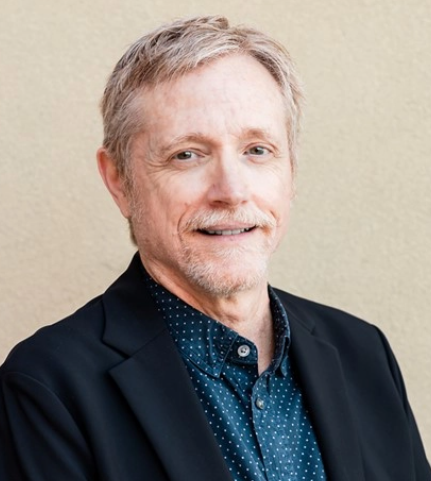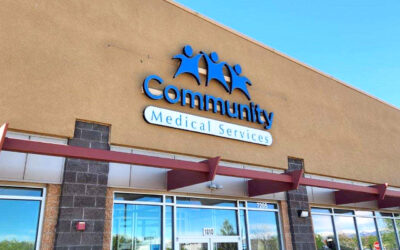What Is Medication Assisted Treatment?

For those struggling with opioid addictions, the most challenging part of treatment is dealing with withdrawal symptoms. The process of readjusting the body to life without opioids can be almost unbearable for some. Luckily, there’s a way to minimize withdrawal symptoms while eliminating cravings.
Medication-assisted treatment (MAT) is the process of giving patients FDA-approved medications to stave off withdrawal symptoms while helping the body adjust to recovery from an addiction to opioids. It is a highly effective treatment that has helped countless patients overcome withdrawal and reclaim their lives from substance abuse disorders.
However, MAT wasn’t always as widely available or as widely accepted as it is today. Join Community Medical Services’ Dr. Sherrick as he discusses the origins, history, and uses of medication-assisted treatment. Read on to learn more about this ground-breaking opioid use disorder treatment.
The History of Medication Assisted Treatment
Medication-assisted treatment is the standard of care for treating opioid use disorders today, but it actually first arose when treating patients with heroin addictions.
For many years, doctors tried all kinds of treatment options for people addicted to heroin – extended hospital stays, aversion therapy, psychoanalysis, threats of incarceration, and more. But they all failed. No matter what the treatment was, people would go back to using heroin after a short time – sometimes just days or weeks after the treatment stopped. Even when patients were desperately wanting to get off of heroin, they still ended up going back. What was going on here? Why couldn’t these people just quit, and why didn’t all these therapies work?
In the 1960s, two insightful researchers, Drs. Vincent Dole and Marie Nyswander were tired of seeing the same patients repeatedly. They talked to their patients and found out that the reason so many people went back to using heroin was that even weeks and months after detoxing, they still felt miserable, both physically and mentally.
While most patients would make it through the “detox” phase (which lasts about a week), they still felt depleted, restless, fatigued, depressed, anxious, and just not comfortable in their skin. Over time, this made it hard to keep from going back to using heroin, especially when things were not going well. One dose of heroin was enough to make them feel normal – but it would also get them right back into the cycle of using and withdrawals.
Dole and Nyswander had the brilliant idea that if they could address the long-term withdrawal symptoms, they might be able to help people stay off heroin. They had a drug, methadone, that, if given once a day, could suppress withdrawal symptoms for 24 hours or longer. Methadone is an opioid – but since it’s long-acting, it does not make people “high” and has few side effects when dosed appropriately.
The results were amazing – suddenly, many people were having long-term success. Not only were they staying off heroin, but their lives were dramatically improving. Patients reported less criminal activity, steady employment, stable housing, and better family relationships. People trapped in the awful throes of a heroin addiction were getting their lives back.
The addition of medication increased the chances of long-term success by 5-10 times over what they had been seeing before. This was a revolutionary development in the treatment of opioid use disorder. However, it still had many obstacles to overcome before it became as widely available as it is today.
The Stigma of Medication Assisted Treatment
Treating patients with medications such as methadone quickly ran into opposition. Those with little knowledge or understanding of heroin addiction were questioning why Dole and Nyswander were giving opioids to drug addicts. The stigma against drug users extended to the use of one of the most effective treatments ever developed. MAT became a hot political issue.
Despite the controversy, however, in the 1970s, the Nixon administration put into effect the regulations governing Opioid Treatment Programs, otherwise known as Methadone Clinics. They started to open mostly in urban areas heavily affected by heroin use. They remained controversial – not everyone got better right away, while others continued to use heroin or tried to sell their methadone. Even though these were the minority, they had the effect of increasing the stigma against all methadone clinics and their patients.
For the vast majority of MAT patients, treatment with methadone is lifesaving, reduces the risk of overdose, and gets the “monkey” of heroin and opioid (and more recently fentanyl) addiction off their backs. Now, there are almost 2,000 Opioid Treatment Programs in the US. They are located in many large and small cities and are available to a large percentage of our population. They continue to be regulated by the federal government, with strict rules on who can be admitted, the initial doses allowed, and whether doses need to be taken under observation in the clinic or can be taken at home.
The Advent of Buprenorphine
Legislation allowing the use of a different drug, buprenorphine, passed in 2002, and Suboxone, the first preparation of buprenorphine for treating opioid addiction, was approved in October of that year.
Buprenorphine is less effective than methadone, but it is also safer. It can be administered in a physician’s office rather than a specialized clinic. For many years, a special designation called an “X-waiver” was necessary before a physician was allowed to prescribe Suboxone. Eight hours of training were required just to offer Suboxone treatments.
Buprenorphine greatly expanded the availability of MAT beyond the areas where methadone clinics were located. Most methadone clinics started offering both methadone and buprenorphine, depending on the patient’s needs and preferences. Due to the stigma against people with addictions, however, implementation of the X-waiver was slow. Eventually, in January 2023, the X-waiver was dropped. Now, any medical provider (physician, nurse-practitioner, or physician assistant) who has a regular DEA license can prescribe buprenorphine (although methadone can still only be used in Opioid Treatment Programs).
How Does Medication Assisted Treatment Work?
What makes medications like methadone and buprenorphine so successful is their ability to alleviate withdrawal symptoms without causing further addictive tendencies. What many people, politicians and patients alike, don’t understand is that while these medications are both classed as opioids, they work very differently from what patients have usually used in the past.
Both medications activate the same neural pathways as traditional opioids. However, they do not produce the same euphoric effects, meaning it is less likely to become addictive. In addition, when methadone and buprenorphine bind to opioid receptors in the brain, they prevent other opioids from binding to them, helping to reduce withdrawal symptoms and prevent cravings.
This gives patients the valuable time they need to work through the underlying reasons for using opioids in the first place. Medication-assisted treatment can help patients stabilize and return to life before their addiction treatment so they can get back on track. These are just a few of the reasons MAT is such an important treatment option for those suffering from substance abuse disorders.
Making MAT Available for Everyone Who Needs It
Medication-assisted treatment is one of the most effective treatments anywhere in medicine, and it treats a condition with a high risk of overdose, death, and social disruption. Yet the vast majority of people struggling with an addiction to opioids – prescription pain pills, heroin, or, these days, more likely, fentanyl – do not get the right treatment.
There is still much stigma around those who have an addiction. Despite overwhelming scientific research to the contrary, many are still regarded as “weak” people who “just need to quit.” Unfortunately, it is never that simple. Even people who desperately want to quit can’t do so without help – and willpower only gets people so far. Expert counseling, along with medication, is the key to success. People need to get onto MAT and stay on it long enough for long-term success.
A substance addiction can take years to develop. It’s unreasonable to expect a cure in weeks or months. Medication-assisted treatment offers a solution to allow people to grow out of their addiction and stay on the long path to recovery.
If you or someone you know is struggling with opioid addiction, the best thing to do is to help them get onto MAT as soon as possible – MAT is the key that releases people from the prison of their addiction.
Get Medication Assisted Treatment at CMS
Community Medical Services dedicates itself to helping individuals struggling with substance addictions reclaim their lives. We treat patients using a holistic method that focuses on both the physical symptoms of their addiction and the deeper psychological issues leading to it.
Our 70 clinics across the United States offer medication-assisted treatment programs featuring methadone, buprenorphine, and naltrexone to accommodate our patients’ needs better. We also offer counseling, peer support groups, and the resources you need to stay the course during your addiction treatment.
Find your nearest Community Medical Services clinic and book an appointment today. A brighter, addiction-free future is just a call or click away.

About the Author
Dr. Robert Sherrick was appointed CMS’s first Chief Science Officer in 2023, transitioning from Chief Medical Officer, a role he served for years.
Before serving CMS, he had experience working at an inpatient addiction treatment facility in Montana, Pathways Treatment Center, treating all forms of Substance Use Disorders and dual-diagnosis patients. Dr. Sherrick has been providing medication-assisted treatment for Opioid Use Disorder since 2003, initially in an office setting using buprenorphine and subsequently with methadone in Opioid Treatment Programs.
He established a state-wide buprenorphine treatment program for VA Montana with an extensive focus on telemedicine. He is board-certified in Addiction Medicine through the American Board of Preventative Medicine. He is the Immediate Past President of the Northwest Chapter of the American Society of Addiction Medicine.
Dr. Sherrick received his MS and BS in Electrical Engineering from the Massachusetts Institute of Technology and his MD from George Washington University Medical Center.
Start the conversation
Related Content
Why did we choose to become a B Corp, and what does it mean?
Why did we choose to become a B Corp, and what does it mean?March 19, 2025Posted by Nick Stavros, CEOAt Community Medical Services (CMS), our mission has always been clear: to help...
The Impact of Urine Drug Screens on Patient Retention and Social Outcomes at CMS
The Impact of Urine Drug Screens on Patient Retention and Social Outcomes at CMSDecember 17, 2024Posted by Dr. Robert SherrickStart the conversation IN THIS ARTICLE The Impact of Urine...
Understanding the Different Types of Opioids and Their Effects
Understanding the Different Types of Opioids and Their EffectsOctober 31, 2024Posted by Dr. Robert SherrickStart the conversation IN THIS ARTICLE Understanding the Different Types of...





0 Comments